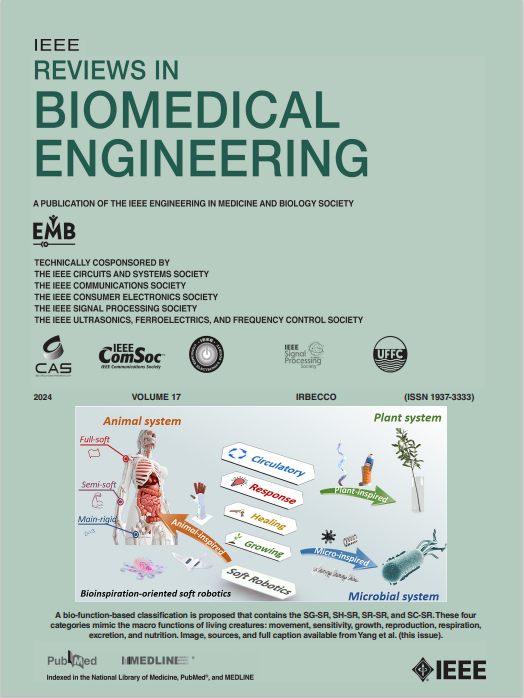Vision Transformers for Computational Histopathology
IF 17.2
1区 工程技术
Q1 ENGINEERING, BIOMEDICAL
引用次数: 0
Abstract
Computational histopathology is focused on the automatic analysis of rich phenotypic information contained in gigabyte whole slide images, aiming at providing cancer patients with more accurate diagnosis, prognosis, and treatment recommendations. Nowadays deep learning is the mainstream methodological choice in computational histopathology. Transformer, as the latest technological advance in deep learning, learns feature representations and global dependencies based on self-attention mechanisms, which is increasingly gaining prevalence in this field. This article presents a comprehensive review of state-of-the-art vision transformers that have been explored in histopathological image analysis for classification, segmentation, and survival risk regression applications. We first overview preliminary concepts and components built into vision transformers. Various recent applications including whole slide image classification, histological tissue component segmentation, and survival outcome prediction with tailored transformer architectures are then discussed. We finally discuss key challenges revolving around the use of vision transformers and envisioned future perspectives. We hope that this review could provide an elaborate guideline for readers to explore vision transformers in computational histopathology, such that more advanced techniques assisting in the precise diagnosis and treatment of cancer patients could be developed.用于计算组织病理学的视觉转换器
计算组织病理学侧重于自动分析千兆字节整张切片图像中包含的丰富表型信息,旨在为癌症患者提供更准确的诊断、预后和治疗建议。目前,深度学习是计算组织病理学的主流方法选择。Transformer作为深度学习的最新技术进展,基于自我注意机制学习特征表征和全局依赖关系,在该领域日益盛行。本文全面回顾了在组织病理学图像分析中用于分类、分割和生存风险回归应用的最先进的视觉变换器。我们首先概述了视觉转换器的初步概念和组件。然后讨论了近期的各种应用,包括整张切片图像分类、组织学组织成分分割,以及采用定制变换器架构的生存结果预测。最后,我们讨论了围绕视觉转换器的使用所面临的主要挑战以及对未来前景的展望。我们希望这篇综述能为读者探索视觉转换器在计算组织病理学中的应用提供详尽的指导,从而开发出更先进的技术来协助癌症患者的精确诊断和治疗。
本文章由计算机程序翻译,如有差异,请以英文原文为准。
求助全文
约1分钟内获得全文
求助全文
来源期刊

IEEE Reviews in Biomedical Engineering
Engineering-Biomedical Engineering
CiteScore
31.70
自引率
0.60%
发文量
93
期刊介绍:
IEEE Reviews in Biomedical Engineering (RBME) serves as a platform to review the state-of-the-art and trends in the interdisciplinary field of biomedical engineering, which encompasses engineering, life sciences, and medicine. The journal aims to consolidate research and reviews for members of all IEEE societies interested in biomedical engineering. Recognizing the demand for comprehensive reviews among authors of various IEEE journals, RBME addresses this need by receiving, reviewing, and publishing scholarly works under one umbrella. It covers a broad spectrum, from historical to modern developments in biomedical engineering and the integration of technologies from various IEEE societies into the life sciences and medicine.
 求助内容:
求助内容: 应助结果提醒方式:
应助结果提醒方式:


